Surrogate Bodies (2024)
Interactive Installation
Surrogate Bodies delves into the intricate relationship between identity, control, and ownership in an era of increasingly pervasive and complex algorithms. Focusing on the face as the link between our online and offline identities, the installation examines the role of biometrics and facial recognition technologies and their prevalence in our daily lives.
Through the use of cutting-edge AI technologies, viewers can assume control of Phelan’s virtual self, inviting critical reflection on the fragility of identity and the shifting nature of ownership in the digital realm, where our representations can be easily accessed, manipulated, or even commodified. This live reanimation process allows the viewer to become a "surrogate body," raising questions about existence beyond the biological form and the implications of having our virtual selves inhabited by others. This dynamic highlights power imbalances and ethical concerns inherent in making one's likeness publicly accessible in spaces where digital manipulation is not only common but progressively sophisticated.
Surrogate Bodies speculates how AI perceives the human form and ultimately aims to shed light on the democratisation of surveillance, prompting viewers to contemplate the growing complexities of online identity, as technology increasingly blurs the boundaries between physical and digital existence.

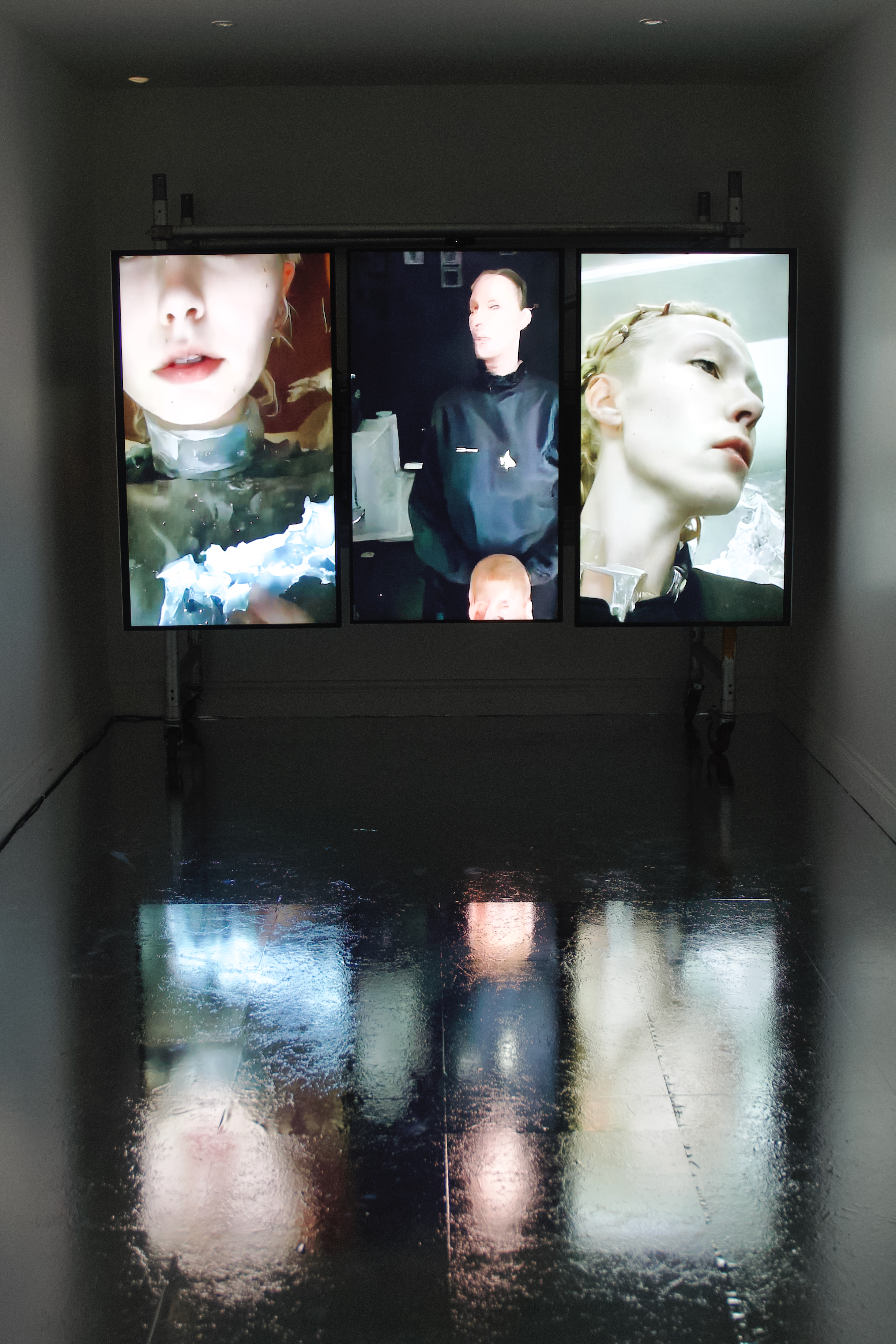
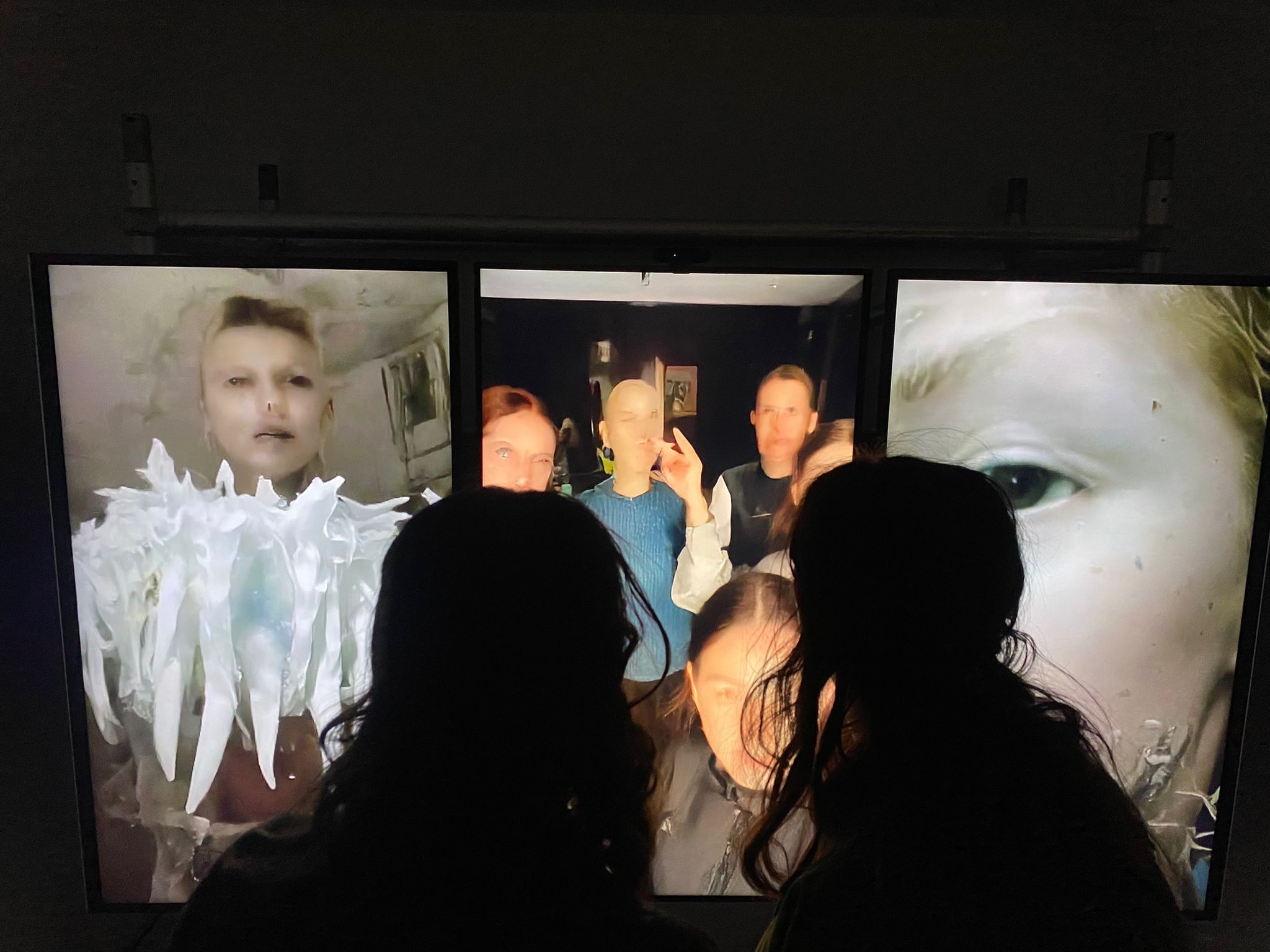
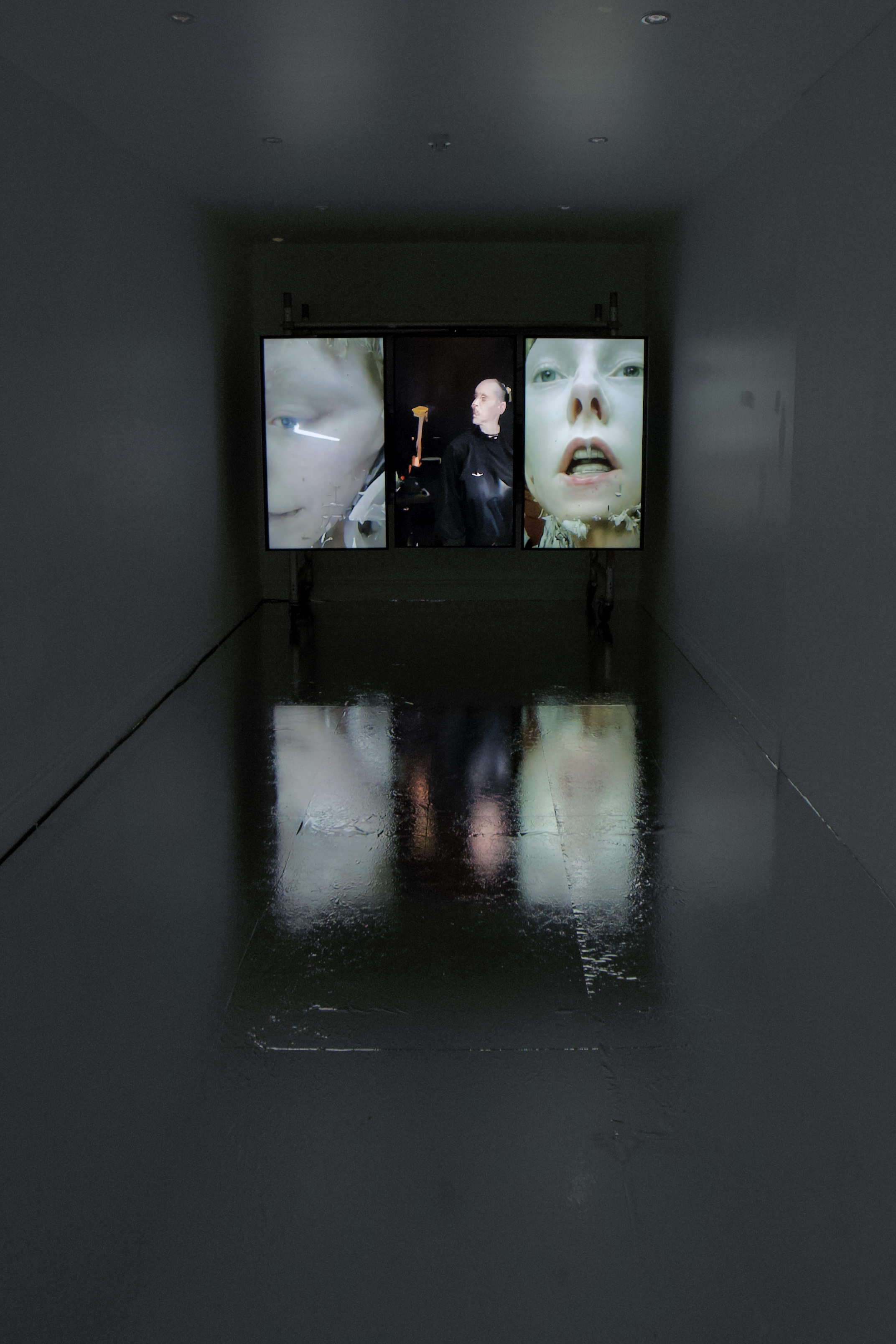
Goodbye Body (2024)
Video
‘Goodbye Body’ is a journey of becoming digital. An initiation. A story of mind uploading, and the subsequent degradation of the physical body. Through an intimate and reflective letter addressed to her physical form, the artist conveys her ultimate decision to transcend the confines of flesh and blood, choosing instead to explore the limitless potential of digital existence.
This piece invites viewers to contemplate the evolving relationship between human experience and technological advancement, challenging conventional notions of identity, existence, and the essence of what it means to be human. Through evocative visuals and a deeply personal narrative, the artist offers a meditation on the future of humanity in an age where the digital and physical worlds increasingly converge.



Spares & Repairs (2024)
Sculpture, Video Piece, Arduino Micro Processors
In the year 2045, driven by an insatiable desire for self-improvement and enhancement, Aisling embarked on a journey of extreme biohacking.‘Spares and Repairs’ presents the haunting legacy left behind by her pursuit of physical, cognitive and cosmetic upgrades.
The installation examines the transhumanist perspective that views our minds and bodies as obsolete technologies, outmoded formats in need of a complete overhaul. Through this lens, the work explores how excessive enhancement alienates the corporeal body and invites reflection on the delicate balance between progress and humanity.
‘Spares and Repairs’ serves as a commentary on the extremes we might pursue in our quest for perfection and challenges us to reconsider the value of our natural humanity in an era dominated by rapid technological advancement and pervasive social media influence.

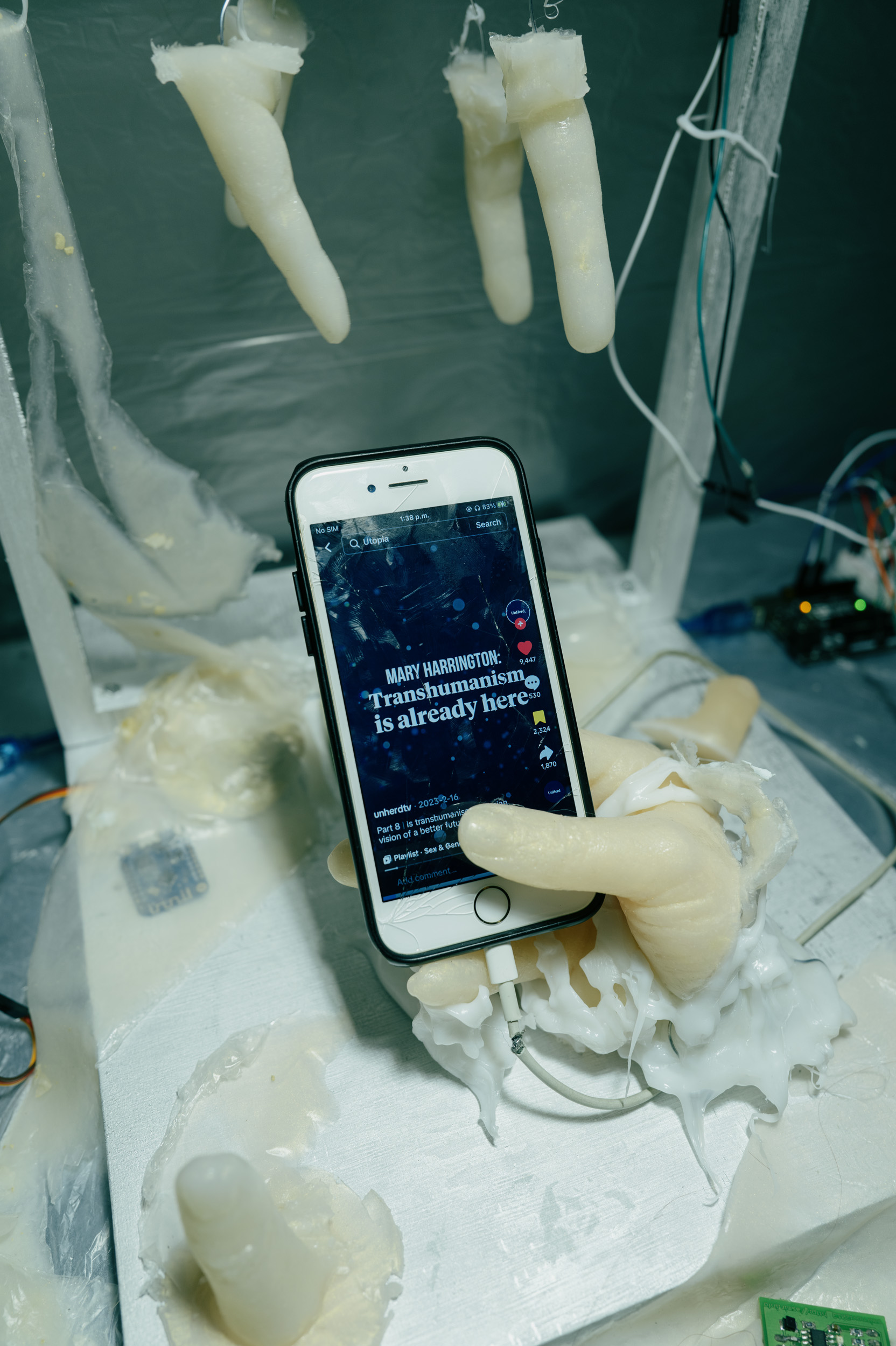

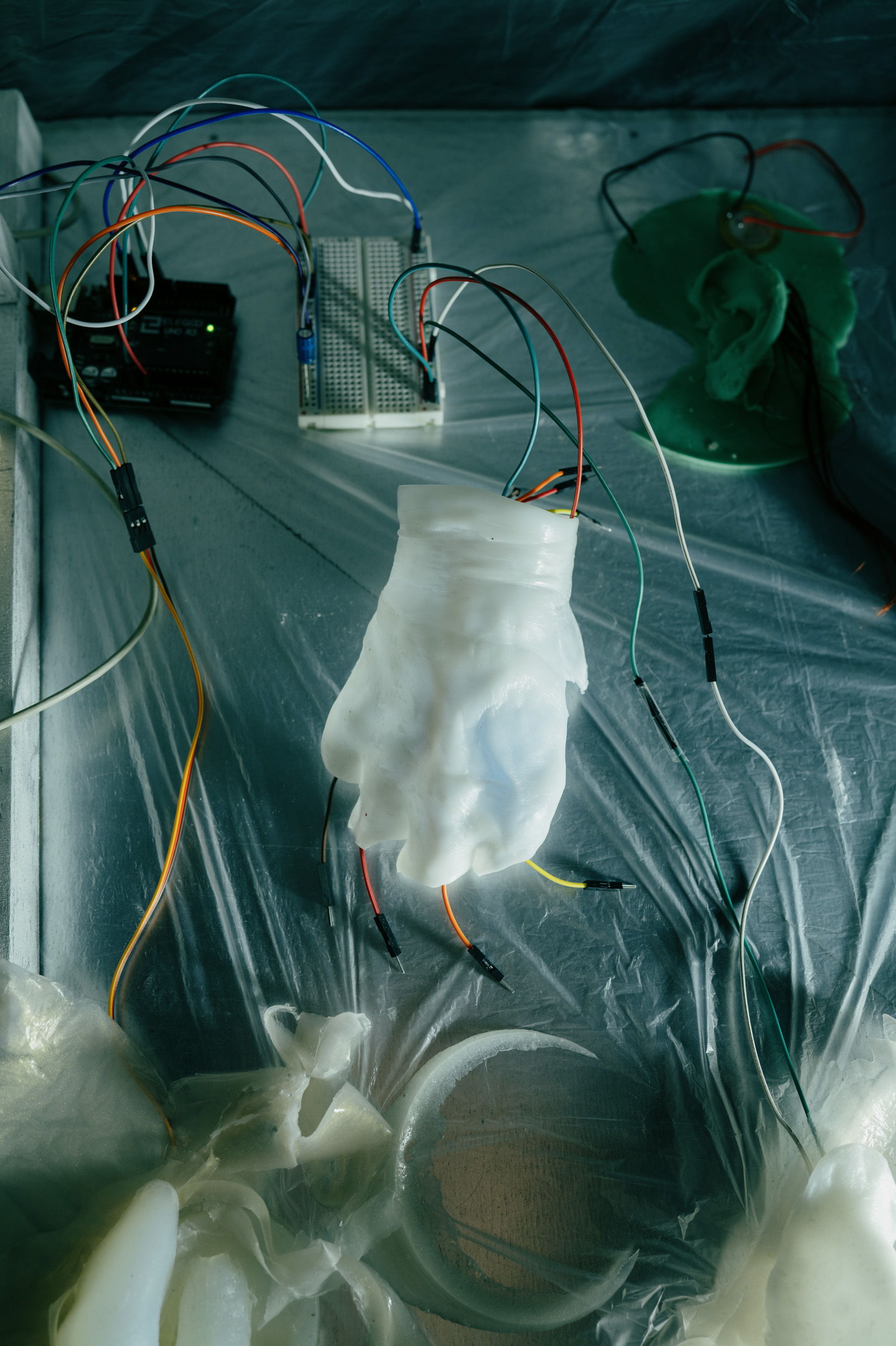
Dual Reality (2022)
Live Interactive Work, Audio Piece, 3D Print
‘Dual Reality’ is an interactive installation that explores the merging of our online and offline identities. It questions what is lost in the digital reconstruction of the human form. Merging physical and virtual space, the installation invites the viewer to fragment Phelan’s digital self. Through interaction with the work, the viewer becomes part of the interplay between the real and the virtual world as they mutually influence each other.
‘The Ship of Theseus’ is a paradox which questions whether an object is the same after all its parts have been replaced. By investigating this thought experiment through a digital lens, this installation encourages reflection on the self in relation to one’s engagement with the online world.
‘Dual Reality’ also features Phelan’s 3D scanned face which has been reconstructed through the process of 3D printing. From a post-photographic perspective, this piece explores how we project versions of ourselves online and represents the ability for our identities to become morphed into one another. The projected video is an exploration of self-documentation over the course of a year, allowing the work represent several layers of identity. This installationis accompanied by an audio piece in which her human and computer-generated voices discuss what it means to have a digital double.


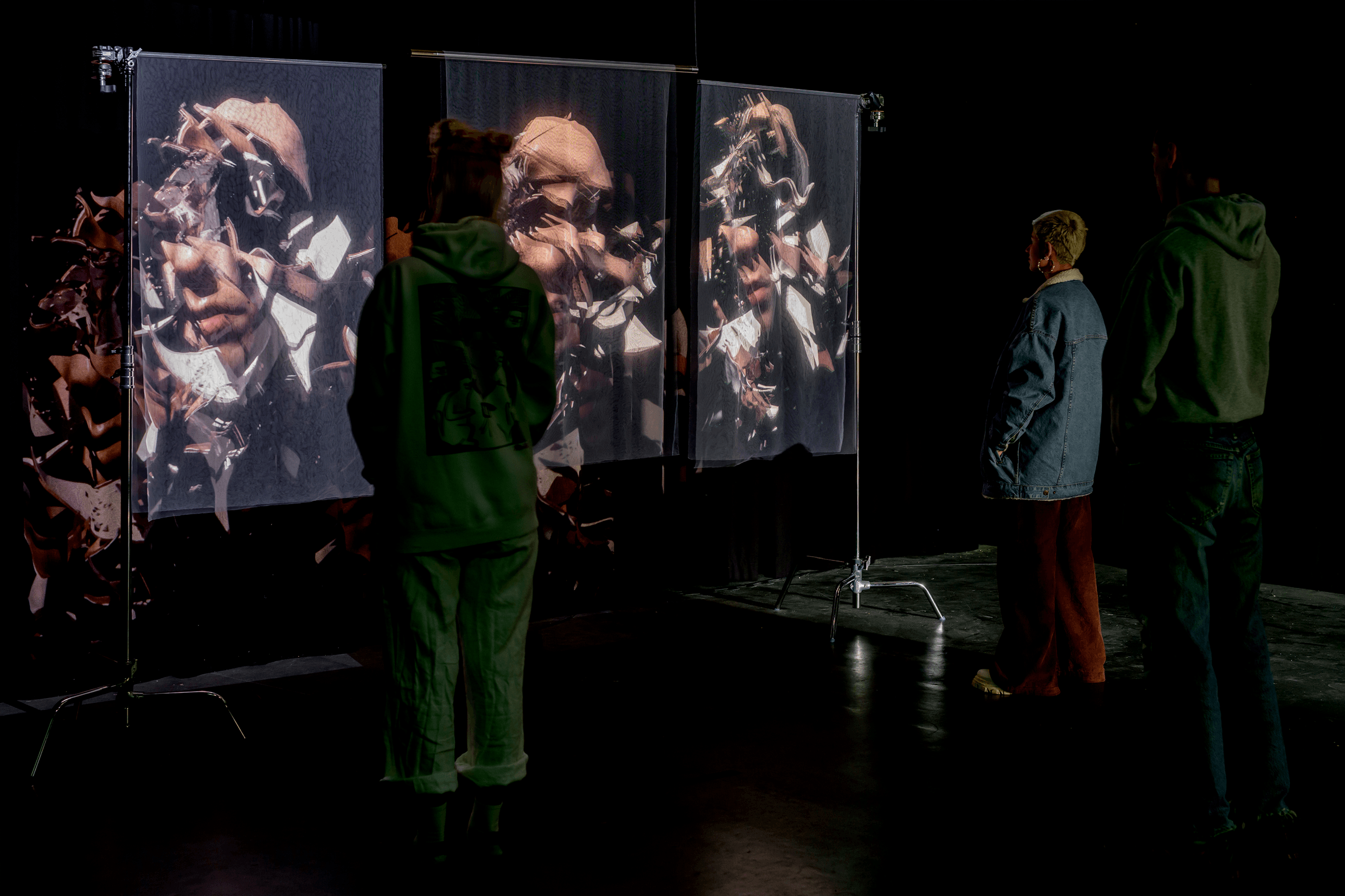
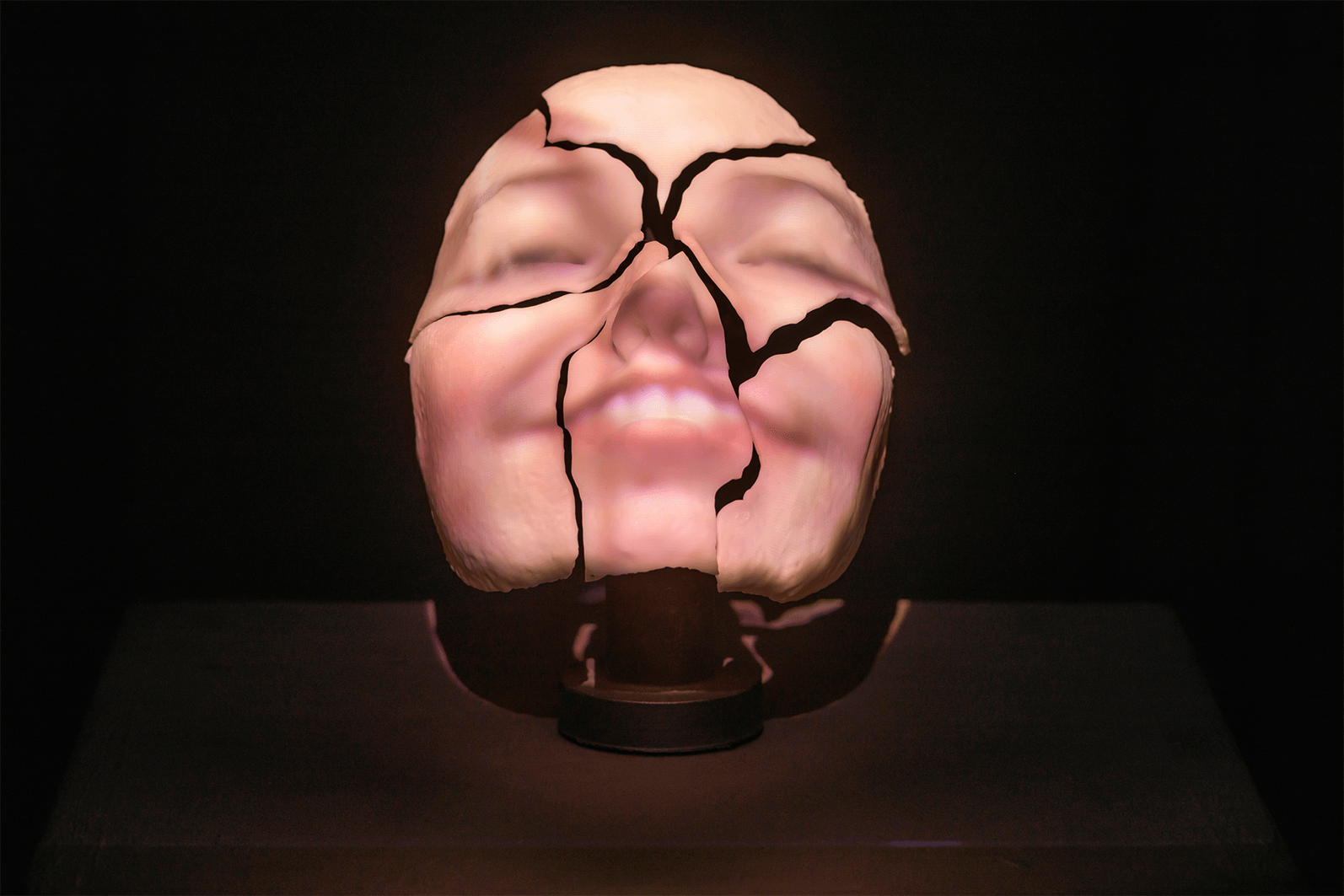
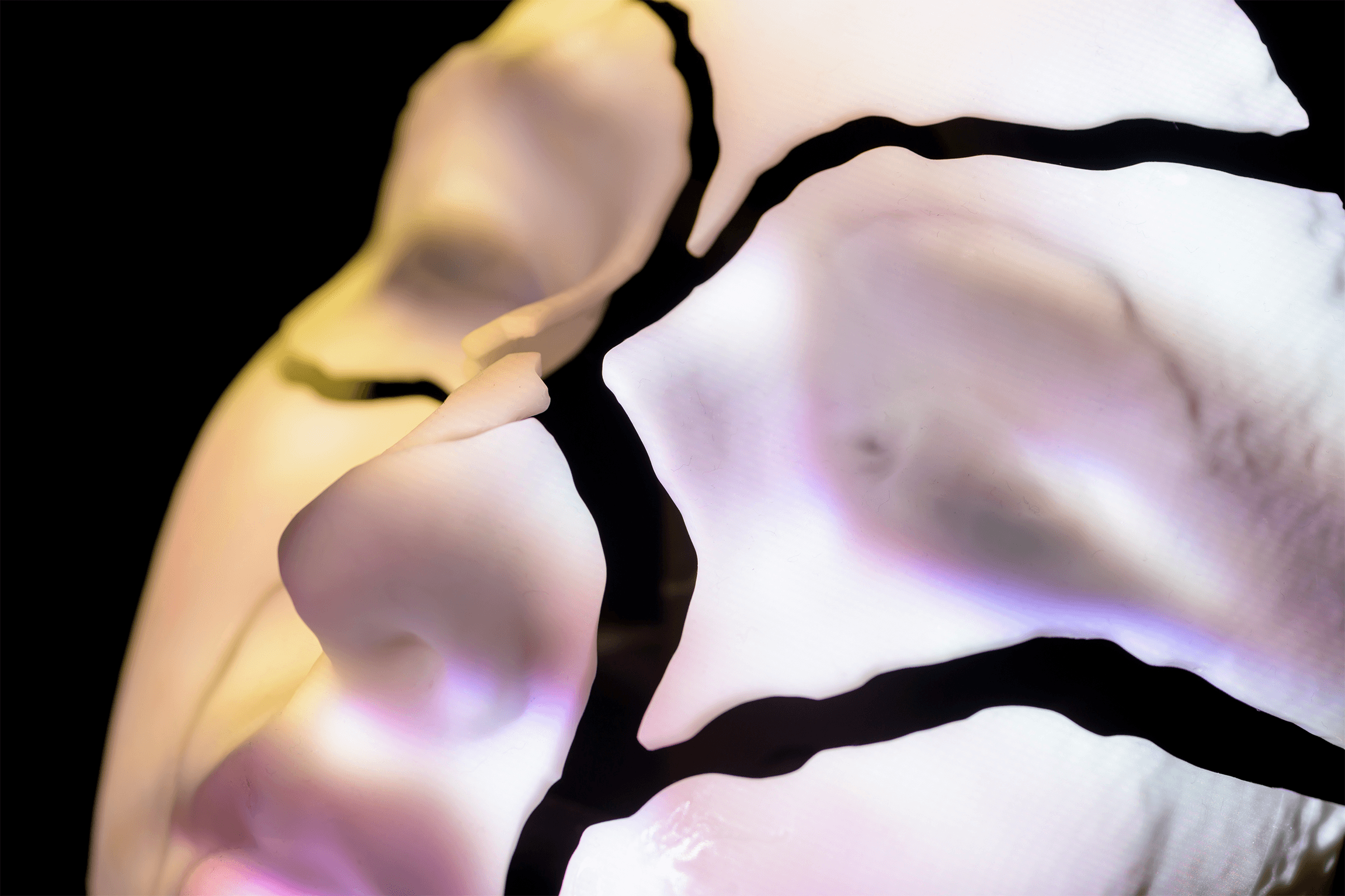

Life Untethered (2021)3D Animation, 6m 50s
‘Life Untethered’ was made as a response to the uncertainty we felt through the global pandemic, a state of flux. Through the use of 3D animation and virtual physics, Phelan explores a zero gravity environment in which two bodies float in space, searching, seeking to connect. Throughout the piece, the two bodies remain out of reach. The soundscape of this piece accentuates its glitches as well as its fluidity, encouraging the viewer towards immersion in this virtual world.



Distributed Presence (2022)
3D Sculpture
‘Distributed Presence’ aims to make tangible the multiplicity and staged nature of our identities online. Through 3D scanning technologies, Phelan captures her body in multiple stages of stasis, as a way to explore the lifelessness of online presence.
3D Sculpture
‘Distributed Presence’ aims to make tangible the multiplicity and staged nature of our identities online. Through 3D scanning technologies, Phelan captures her body in multiple stages of stasis, as a way to explore the lifelessness of online presence.

Multiple Selves (2021)
Digital Sculpture
‘Multiple Selves’ is an exploration into Phelan’s digital self and her online representation. These abstracted digital bodies have been textured with images of the artists face taken from her social media platforms. Exploring themes of identity, ‘Multiple Selves’, represents the fragmented narratives that we build of ourselves online, while questioning their validity.
Digital Sculpture
‘Multiple Selves’ is an exploration into Phelan’s digital self and her online representation. These abstracted digital bodies have been textured with images of the artists face taken from her social media platforms. Exploring themes of identity, ‘Multiple Selves’, represents the fragmented narratives that we build of ourselves online, while questioning their validity.
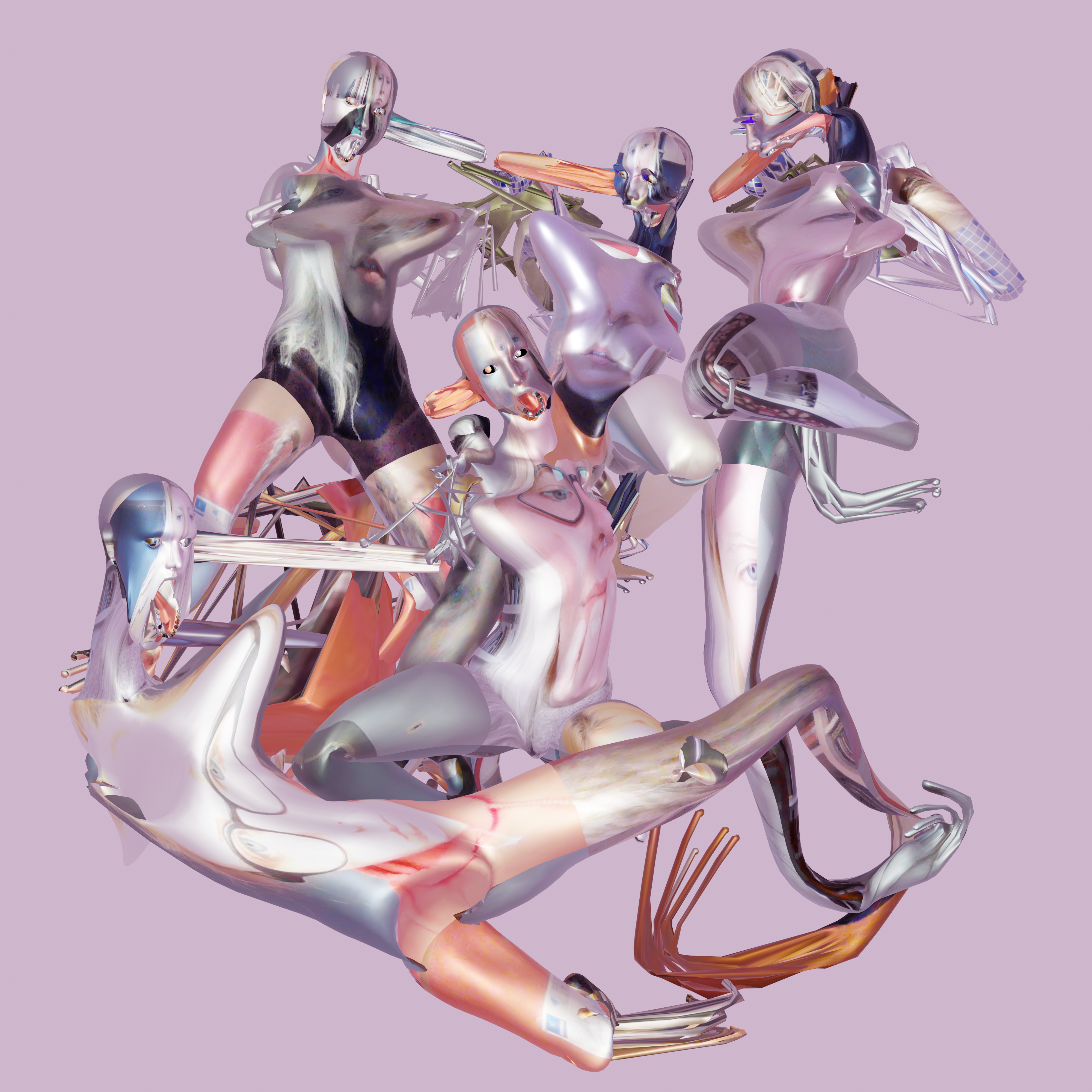
Untitled 1-8 (2020)
Photograms
UNIQLO Tate Lates Display, Tate Modern
These photograms were the result of an exploration into cameraless photography, created by the artist using found object and a darkroom. As part of the Dora Maar exhibition, this selection of photograms were included in the digital show-reel for the #EverydayDoraMaar UNIQLO Tate Lates Display in the Blavatnik Building in the Tate Modern.
Photograms
UNIQLO Tate Lates Display, Tate Modern
These photograms were the result of an exploration into cameraless photography, created by the artist using found object and a darkroom. As part of the Dora Maar exhibition, this selection of photograms were included in the digital show-reel for the #EverydayDoraMaar UNIQLO Tate Lates Display in the Blavatnik Building in the Tate Modern.




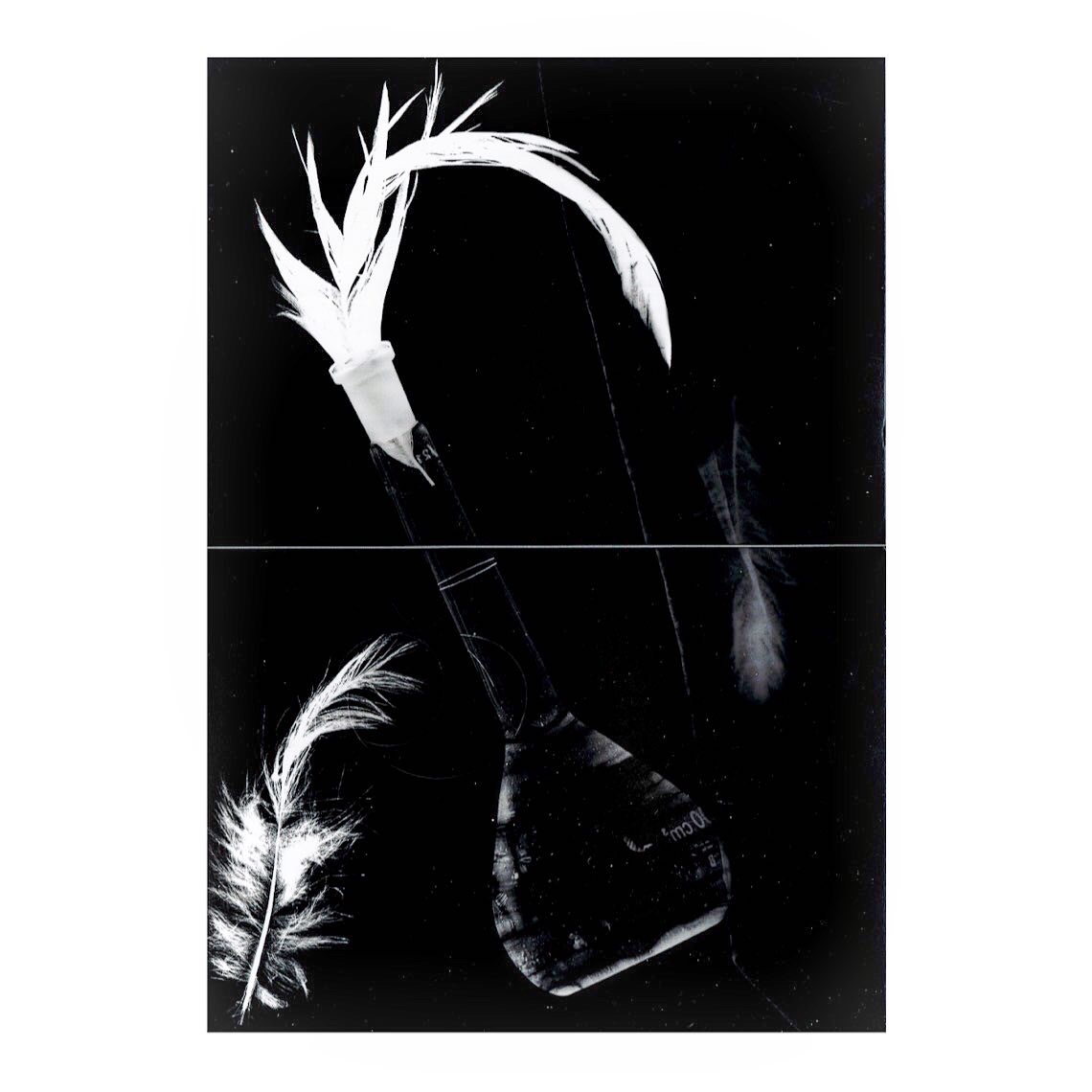
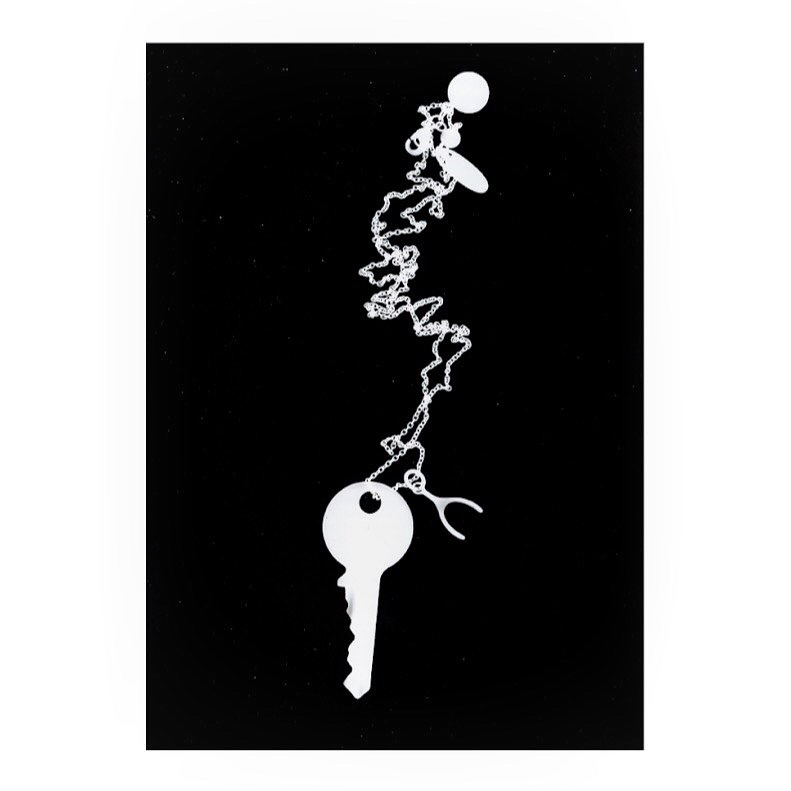


Dear Data (2020)
Poetry Piece, A4 and Self Portrait,
‘New Realities’, Online Interactive Magazine, Douglas Hyde Gallery
‘Dear Data’ is an apology letter from the artist to all the data she has given away. This letter expresses feelings of guilt and regret while also expressing a newfound appreciation and respect for her data. Her sincere apologies attempt to create a sense of responsibility in the reader for their own data and force them to think about how much they have given away. Accompanying this piece is a self-portrait created from Phelan’s information stored by Facebook, in which she requested access. This work has been informed by Jaron Lanier’s research into developing a more dignified information economy.
Poetry Piece, A4 and Self Portrait,
‘New Realities’, Online Interactive Magazine, Douglas Hyde Gallery
‘Dear Data’ is an apology letter from the artist to all the data she has given away. This letter expresses feelings of guilt and regret while also expressing a newfound appreciation and respect for her data. Her sincere apologies attempt to create a sense of responsibility in the reader for their own data and force them to think about how much they have given away. Accompanying this piece is a self-portrait created from Phelan’s information stored by Facebook, in which she requested access. This work has been informed by Jaron Lanier’s research into developing a more dignified information economy.
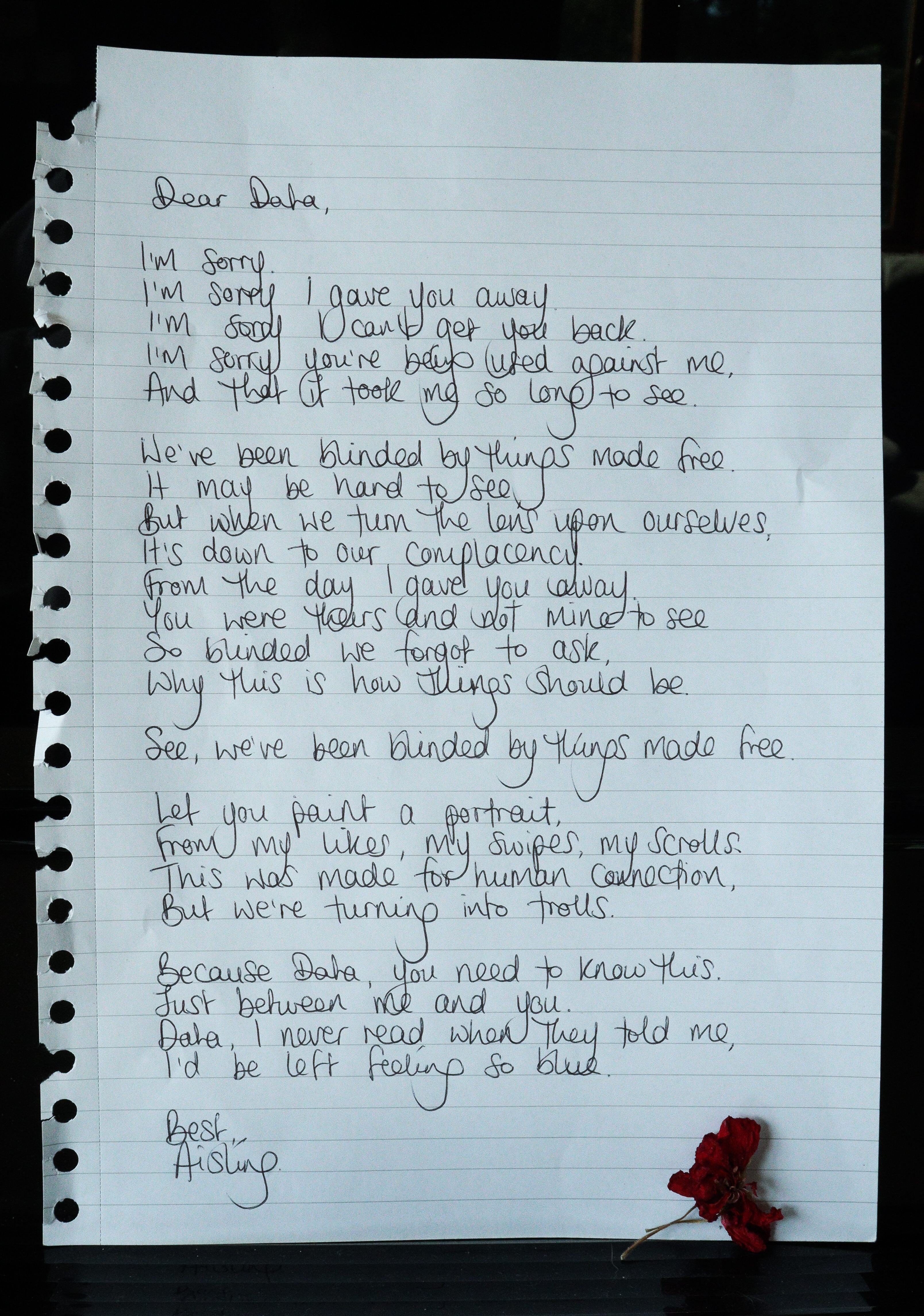

Playlist Pools (2019)
Virtual Reality Performance,
Temple Bar Gallery & Studios
‘Playlist Pools’ is an amalgamation of single lines of lyrics that hold the key to a very specific time in Aisling’s life, written in order to make a 4hr and 47m long playlist into something more accessible and tangible. Aisling is interested in the language used in music and how differently we react with it, and in fact how it can react with us, when the melody is taken away. This piece explores how we can integrate that into other art forms such as poetry and the visual arts.
This poem was written for the Young Art Writers Programme and was published in the Dublin Art Book Fair 2019.
Virtual Reality Performance,
Temple Bar Gallery & Studios
‘Playlist Pools’ is an amalgamation of single lines of lyrics that hold the key to a very specific time in Aisling’s life, written in order to make a 4hr and 47m long playlist into something more accessible and tangible. Aisling is interested in the language used in music and how differently we react with it, and in fact how it can react with us, when the melody is taken away. This piece explores how we can integrate that into other art forms such as poetry and the visual arts.
This poem was written for the Young Art Writers Programme and was published in the Dublin Art Book Fair 2019.
The Body is Present (2019)
Live Virtual Reality Performance, VR Chat.
IMMA Open Studio.
“Our bodies simultaneously exist in two realities, internally and externally, experiencing and being experienced.”
In today’s society, technology is so often pulling us away from each other. This piece uses virtual reality to create an intimate setting in a virtual world through a reiteration of Marina Abramović’s ‘The Artist is Present’. The work explores what it means to be physically present in one space while being psychologically present in another. It relies on the viewer's presence to inhabit these virtual bodies and gain new perspectives on human connection in digital spaces.
Live Virtual Reality Performance, VR Chat.
IMMA Open Studio.
“Our bodies simultaneously exist in two realities, internally and externally, experiencing and being experienced.”
In today’s society, technology is so often pulling us away from each other. This piece uses virtual reality to create an intimate setting in a virtual world through a reiteration of Marina Abramović’s ‘The Artist is Present’. The work explores what it means to be physically present in one space while being psychologically present in another. It relies on the viewer's presence to inhabit these virtual bodies and gain new perspectives on human connection in digital spaces.

Present In A Time Of Absence (2019)
A short film made to highlight the rapid gentrification in Dublin City today, and the threat of this on the city’s culture. Using film as a means of preservation I aim to immortalise some culturally rich parts of the city, such as Thomas St. stalls, the Bernard Shaw pub and the graffiti wall surrounding it.